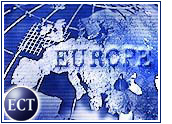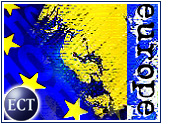
Although 38 percent of European businesses use the Internet to buy goods and services, another 36 percent expect to incorporate online purchasing in their operations beginning next year, according to data released Thursday by IDC.
Many European companies are already laying the groundwork for automated acquisition and management of goods and services, the research firm said.
With growing numbers of European organizations making substantial capital and technological investments in online exchange initiatives, the report found that fewer are willing to ignore the trend. In fact, only 9 percent of those interviewed told IDC that they have ruled out the option of using the Internet as a purchasing channel.
In conducting its survey, IDC collected information from 500 procurement managers in six Western European countries..
IDC said that the second leading reason for using e-procurement is lowered costs, cited by 38 percent of its respondents, followed by the ability to comparison shop, greater product selection, improved workflow, tighter control overoperations, and smoother supplier coordination.
Among non-users, however, the top two reasons provided for their reluctance to buy via the Internet is that managers or their suppliers are not online or are not ready. Other e-procurement deterrents were long-running contracts with existing suppliers and established business practices.
Buying Patterns
The Framingham, Massachusetts-based research firm found that much Europeane-procurement activity is confined to the maintenance, repair and operationsupplies (MRO) sector. Comprising items used in daily operations, such aspens and chairs, this category does not include material used to manufacture goods.
More than half of purchasing managers reported buying MRO goods online, while about one-quarter have acquired materials used in manufacturing products via the Internet.
However, the study said the manufacturing segment appears to be gaining ground with purchasing managers, one third of whom told IDC that they are currently buying material as well as production equipment online. By comparison, the overall participation rate across all industries is 24 percent.
Financial Charge
In addition to manufacturing, other sectors leading the early e-purchasingadoption charge are finance and public services, according to the study.
Lagging behind, with only a 22 percent participation rate, is the retail/wholesale sector. The report said this low figure might be attributed to the category’s high use of electronic data interchange (EDI).
Early Adopters
The adoption of European purchasing via the Internet follows the general pattern of the continent’s e-business maturity, IDC said. For instance, more than half the companies interviewed in Sweden already purchase online, compared to 21 percent of French firms.
Meanwhile, purchasing managers in Italy displayed the most activity inonline procurement of materials for manufacturing.
“This correlates fairly closely with the percentage of employees that haveaccess to the Internet in companies in the different countries,” said IDC.
Breaking Barriers
An internal resistance to change poses the most significant challenge tofull-scale implementation of online purchasing systems, with 27 percent ofIDC’s respondents citing it as a reason why their plans have been hindered.
Other barriers identified by those surveyed include: difficulty using or understanding the e-procurement system, insufficient employee training, the challenge of integrating the new system with existing information technology networks, and inconsistent supplier migration to the Internet.
“It’s clear that e-procurement vendors have their marching orders,” IDC concluded. “If they can reduce or eliminate some of these concerns, they will find a more receptive market.”![]()














































Social Media
See all Social Media